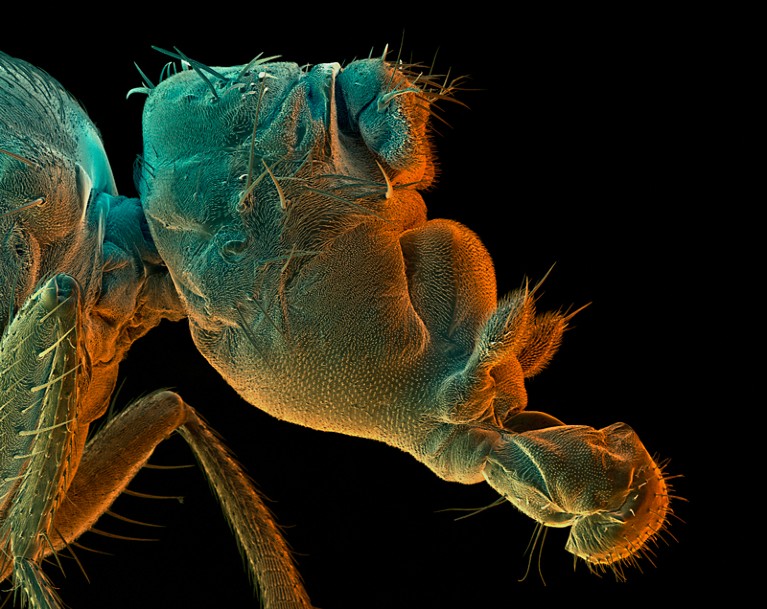
The eyeless gene is important for fruit-fly retina development, but it is not necessary and sufficient.Credit: David Scharf/SPL
In his 1946 classic essay ‘Politics and the English language’, George Orwell argued that “if thought corrupts language, language can also corrupt thought”. Can the same be said for science — that the misuse and misapplication of language could corrupt research? Two neuroscientists believe that it can. In an intriguing paper published in the Journal of Neurogenetics, the duo claims that muddled phrasing in biology leads to muddled thought and, worse, flawed conclusions (M. Yoshihara and M. Yoshihara J. Neurogenet. 32, 53–64; 2018).
The phrase in the crosshairs is “necessary and sufficient”. It’s a popular one: figures suggest the wording pops up in some 3,500 scientific papers each year across genetics, cell biology and neuroscience alone. It’s not a new fad: Nature’s archives show consistent use since the nineteenth century.
Used properly, the phrase indicates a specific relationship between two events. For example, the statement, “I’ll pay for lunch if, and only if, you pay for breakfast,” can be written as, “You paying for breakfast is necessary and sufficient for me paying for lunch.”
But, argue Motojiro Yoshihara and Motoyuki Yoshihara, use of the phrase in research reports is problematic, and should be curtailed.
The logic of the term is at the heart of the dispute. It’s too often used as shorthand to mean ‘linked to’ or ‘important for’, the authors say. And this sloppy use, they argue, can lead scientists in the wrong direction, especially in genetics.
If a gene is necessary and sufficient for something (as often claimed), strict logic demands that that gene alone can do the job. For example, the gene eyeless is certainly necessary for a retina to develop. But it is not sufficient — if it were, then logic would demand that ‘if eyeless exists, then a retina will develop’. This is false; other genes and factors are needed as well. Yet eyeless is often described as being necessary and sufficient for retinal development.
The duo argues that its objection to such incorrect use is more than pedantry. The combination of necessary and sufficient is excessively strict, and its widespread use has meant, for example, that some ‘command’ neurons have failed to be identified as such because they don’t satisfy the required criteria. (The agreed definition of a command neuron is one that is necessary and sufficient to initiate a behaviour.)
One such missed neuron is the Mauthner cell, responsible for a fast-escape reflex in fishes and amphibians. In fact, so few command neurons satisfy the logic of the phrase that the concept that they exist at all has been undermined, the authors say.
In most cases, they propose, a better phrase than ‘necessary and sufficient’ would be “indispensable and inducing”. (Number of uses so far: one, in their paper.)
Will it catch on? Biologists will no doubt counter that they use the ‘necessary and sufficient’ phrase in a mutually understood way that is separate from its logical roots. Perhaps, but then Orwell had that covered, too: “A bad usage can spread by tradition and imitation even among people who should and do know better.”

 How to write a first-class paper
How to write a first-class paper
 Publish like a pro
Publish like a pro
 A helping hand
A helping hand







